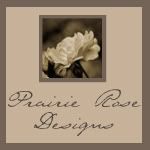First is the saddle which is where the tail gut rides on top of. The wood needs to be hard due to the tension so ebony is used for this.
I can't imagine after all the work went in to making the nice edge and inlaying the purfling to have to cut into it like that, but that is how they are built.
Here you have the saddle glued into its proper position. The tail piece will ride just in front of it and the tail gut will extend out the end of the tail piece, over the saddle, and then loop around the end button.
The other end is then cut in the exact shape to fit in the neck. Just like the bottom end, I can't imagine cutting into this masterpiece after all that work finishing it.
This is the most critical joint in the whole instrument as it will bear all the tension of the strings. It has to fit perfectly to not have a gap, so it is very fine work to make it fit just right.




We decided with such unique and old wood that it would be a shame to cover it up with stain. So we went with just a natural finish for the varnish to let the natural beauty of both types of wood come out.
Here we see the front and the back drying after one of the coats of varnish have been applied. The color of the spruce is particularly interesting as it is darker than a newer piece of spruce due to its age. The ancient kauri is a deeper color and has some iridescence to it. I really love the colors.
This piece is a little tricky given the shape, curves, and the bend of the inlaid bridge. The following is a series of images on the carving of the tail piece.
The holes for the center string hole and a decorative eye are drilled.
The bottom of where the tail gut will be run is carved out.
You can see how the tail gut will be held underneath the tail piece.
The narrow part of the tail piece is then tapered.
The entire top surface is then blended together.
The underside is then chiseled out to give the tail piece its proper thickness.

Here is how we found it sitting in the case when we came to pick it up.



The violin will make its public debut this Sunday, June 8th at Christ Covenant OPC in Crystal Lake. After I get a little more practice under the belt, I'll post some audio and video for everyone to hear it. Special thanks obviously goes to Martin Brunkalla for his time and superb craftsmanship to make such a beautiful instrument which will be played and loved for the rest of my life. Thanks for joining me in this quest to make a dream come true. It was quite a journey.
The last piece that needs to be created is the tail piece. We couldn't find the tail piece I wanted in rosewood, but we got one in ebony so that it can be created out of rosewood to match the other fittings. Here is the rosewood block it will be made out of with a trace of the shape.

This piece is a little tricky given the shape, curves, and the bend of the inlaid bridge. The following is a series of images on the carving of the tail piece.
The holes for the center string hole and a decorative eye are drilled.
The bottom of where the tail gut will be run is carved out.
You can see how the tail gut will be held underneath the tail piece.
The shape of the tail piece is then cut out as traced from the top.
The curved shape is then shaved off the top.
The shaping is continued to be worked all the way down to the narrow part of the tail piece.
The narrow part of the tail piece is then tapered.
The entire top surface is then blended together.
The underside is then chiseled out to give the tail piece its proper thickness.

Lines are then traced to align the rest of the string holes and the inlay for the little string bridge strip. The pilot holes are then drilled.
With the tail piece clamped down, the groove for the string bridge is chiseled out and an additional hole is drilled for the one fine tuner on the E string hole.
The eye is placed in the middle hole.
Here is the finished tail piece with the fine tuner and the string bridge inserted.
With the varnish completed on the violin, the hole for the end button needs to be drilled and then the end button inserted.
The nut is then attached at the top of the fingerboard and then grooves are created for the strings to sit in. The height of the nut is what determines the height of the strings above the fingerboard.
The final two tasks are to set the sound post underneath the bridge and then cut the bridge. Here is a picture of the bridge prior to being cut and fitted. The sound post is set in the perfect position by actually sighting it through the end button hole.
And finally, the pegs are re-inserted, the strings are added, and the chin rest is clamped in place. Voila!!
Checking out the finished instrument for the first time.

Delighted with the result to the right.
Putting the shoulder rest on for the first time to the left.
Playing the instrument for the first time! Pure Joy!!
It has a very deep and rich tone, almost like a cello when you play the lower strings. It produces quite a bit of volume.
Having a 5th string takes a bit of getting used to as I can't use the same angle with the bow when playing the G string as I do on a traditional violin.
The finished instrument in a series of shots.


One last picture with Martin before we took it home.
The violin will make its public debut this Sunday, June 8th at Christ Covenant OPC in Crystal Lake. After I get a little more practice under the belt, I'll post some audio and video for everyone to hear it. Special thanks obviously goes to Martin Brunkalla for his time and superb craftsmanship to make such a beautiful instrument which will be played and loved for the rest of my life. Thanks for joining me in this quest to make a dream come true. It was quite a journey.















































1 comment:
Gorgeous instrument David! Can't wait to hear it (in person :-)
Mom D.
Post a Comment